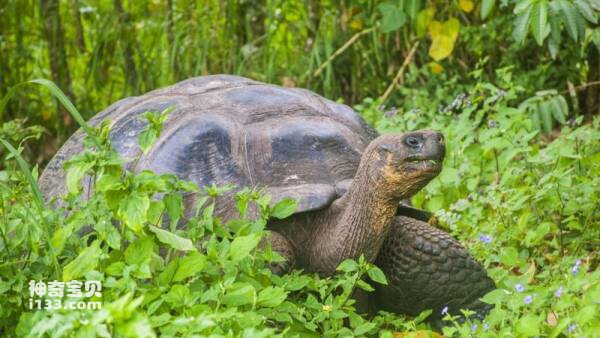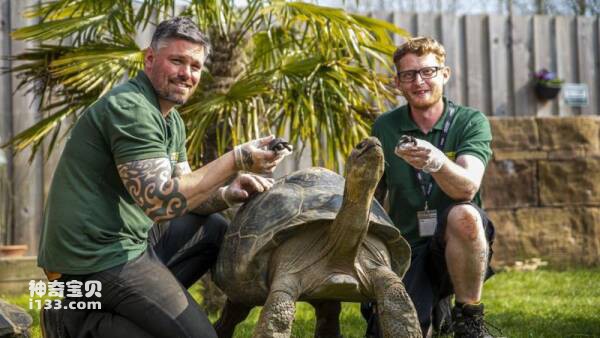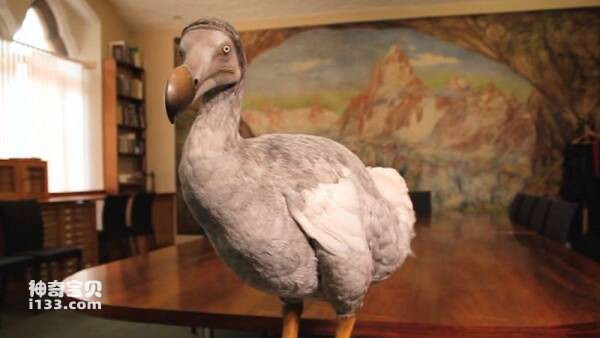The Galapagos tortoise is one of the largest living tortoises and is endemic to the Galapagos Islands in Ecuador. Adult tortoises are 1.5 meters long, with an average weight of 175 kilograms, and the highest recorded weight is 400 kilograms. Wild tortoises can live more than 100 years.

In the 1830s, British biologist Charles Darwin sailed for five years aboard the Royal Navy exploration ship "Beagle" and landed on the inaccessible Galapagos Islands for the first time to observe and study Galapagos tortoises. This started Darwin's thinking on establishing the theory of evolution. Therefore, the Galapagos tortoise is also made famous by Darwin.
Giant tortoises are vegetarian animals and eat fruits such as cacti and pineapples, leaves and grasses. They move very slowly, only moving 260 meters per hour.
When Darwin first arrived in the Galapagos Islands, there were about 200,000 Galapagos tortoises, but more than a hundred years later, in the 1970s, there were only about 3,000 left. The main reason for the plummeting population is human hunting for turtle meat and oil, and habitat loss for agricultural production and livestock raising.
Galapagos tortoise meat was once considered a delicacy. The Beagle carried 30 live tortoises on its long voyage from the Galapagos Islands to Polynesia. Most of them were eaten by the crew.

All giant tortoises in the Galapagos Islands are on the IUCN Red List, with rarity ranging from vulnerable to critically endangered. There are 10 subspecies of the original 15 subspecies left in the wild, and some subspecies have already extinct.
The last known individual of the Pinta Island tortoise, a subspecies of the Galapagos tortoise, "Lonesome George" was discovered in 1971. Although he successfully mated with a female tortoise with the help of artificial breeding, a total of 13 were born. Only eggs. But in the end they failed to hatch successfully.
On June 24, 2012, "Lonesome George" died, marking the extinction of the Pinta Island tortoise.
The practical significance of protecting biological diversity
Scientists point out that without nature, life on earth would cease to exist. Changing or deleting any one element in the web of life will affect the entire life system and may have negative consequences.

The United Nations says: Biodiversity is the web of life that connects and supports all humankind. The current rate of species loss is tens to hundreds of times higher than the average of the past 10 million years, and it is accelerating.
Environmental scholars point out that human activities have encroached on wildlife habitats, reduced the genetic diversity of animal populations, intensified climate change and triggered extreme weather events, ultimately destroying the delicate balance of nature and paving the way for the spread of viruses between animal populations and humans. ideal conditions were created.
Scientists warn that the outbreak of the new coronavirus epidemic is a wake-up call from nature. Destroying biological diversity is destroying the foundation of the system that supports the survival of human life. Therefore, whether you are protecting the Galapagos tortoise or the natural ecology of the giant panda, you are also protecting the future of mankind.
animal tags: tortoise
We created this article in conjunction with AI technology, then made sure it was fact-checked and edited by a Animals Top editor.